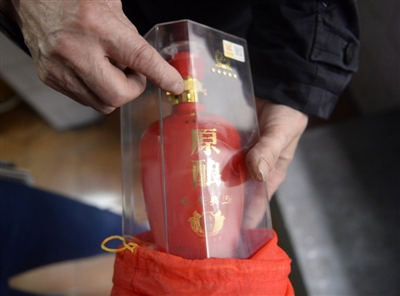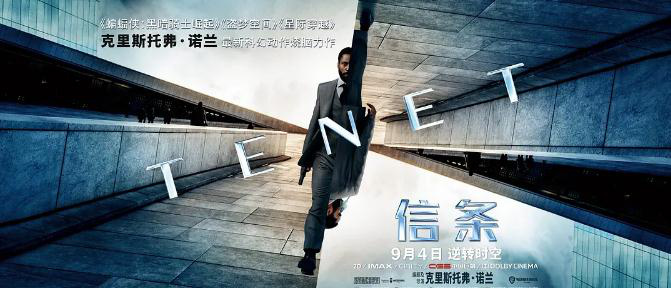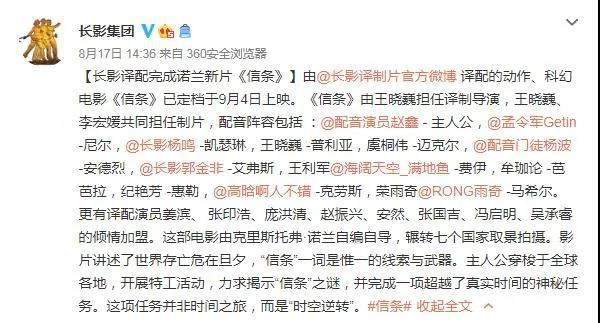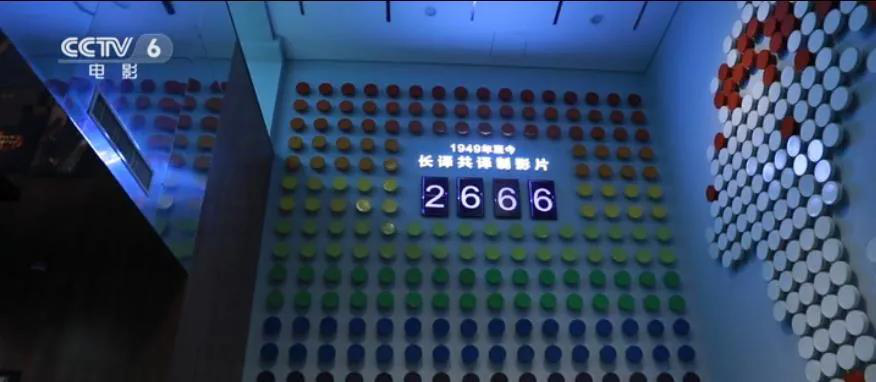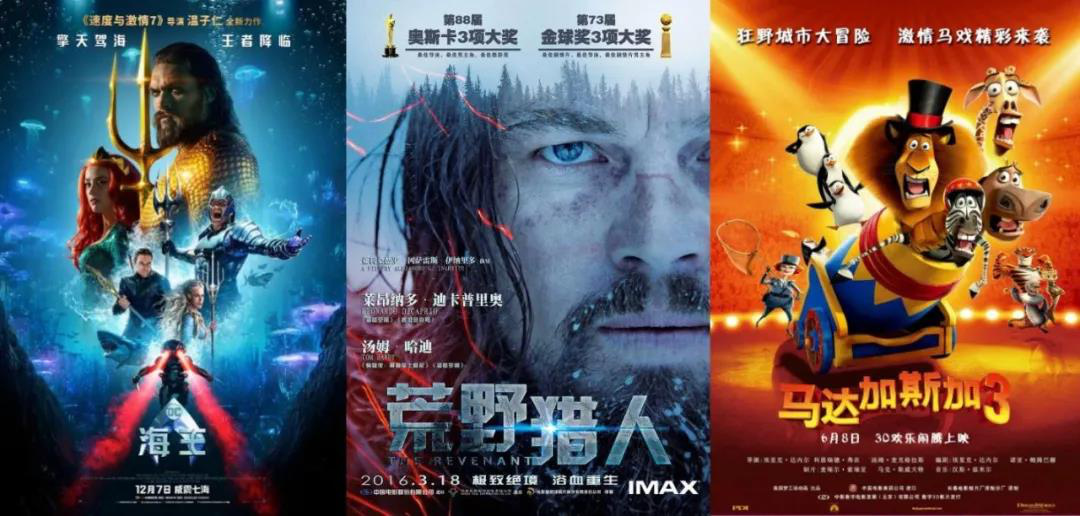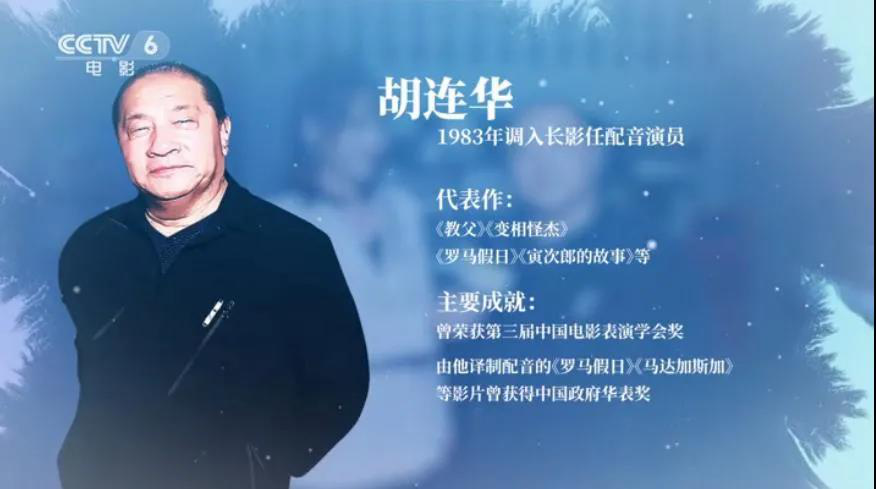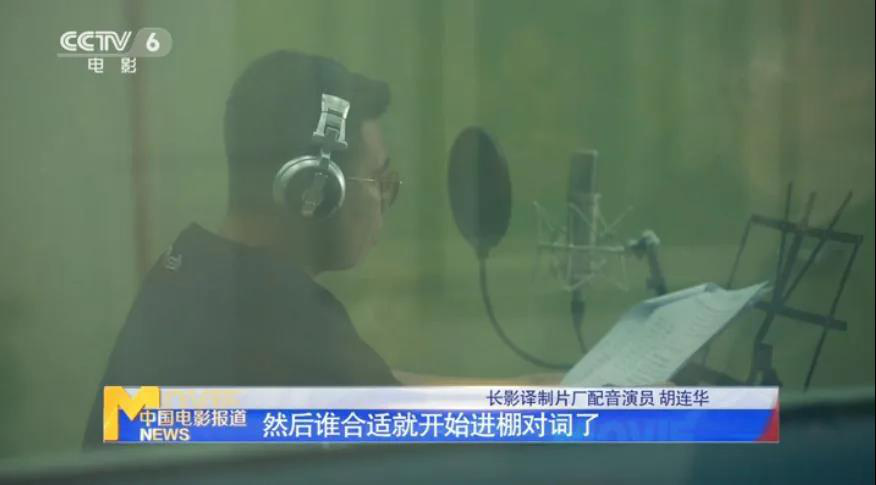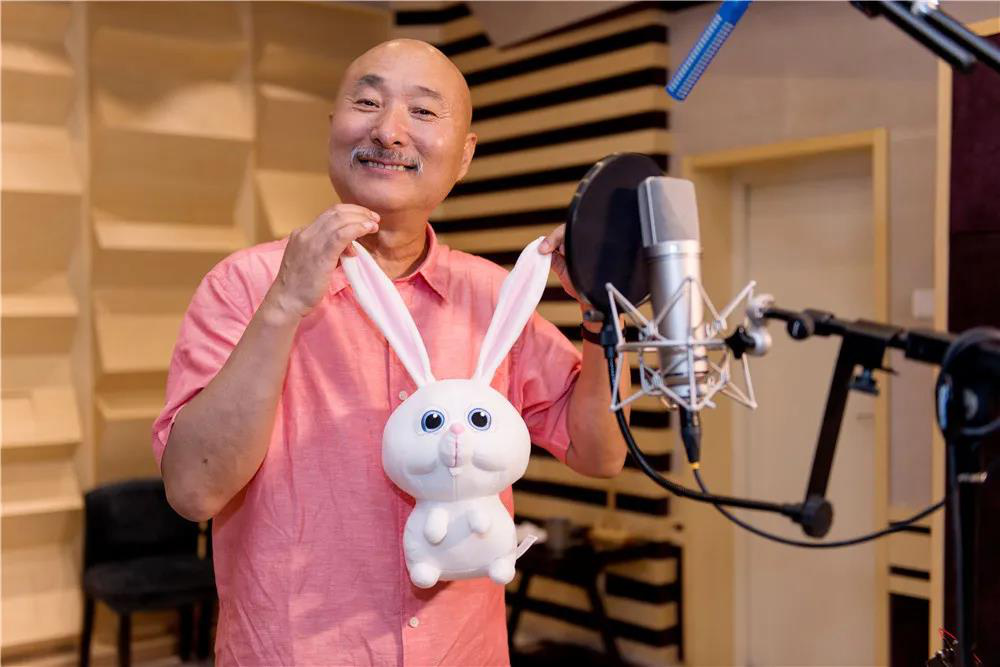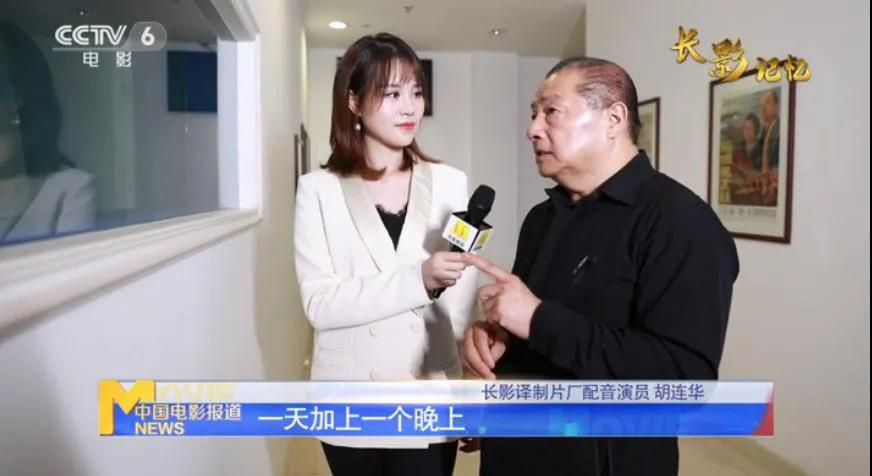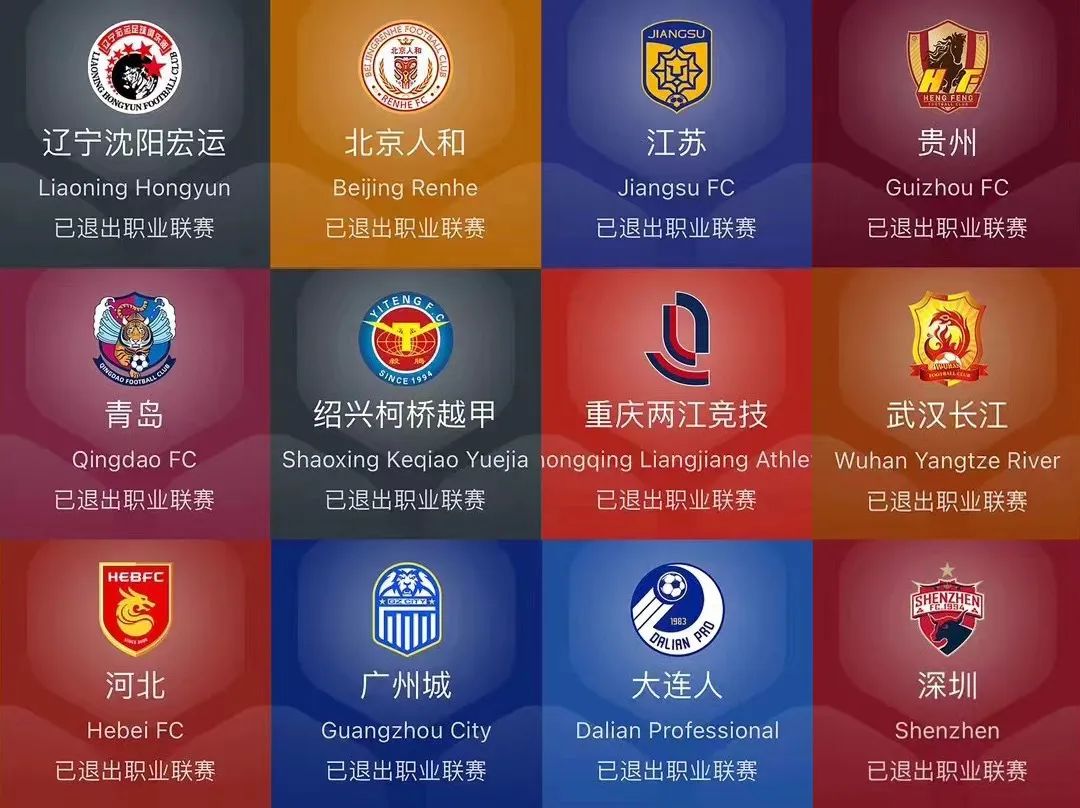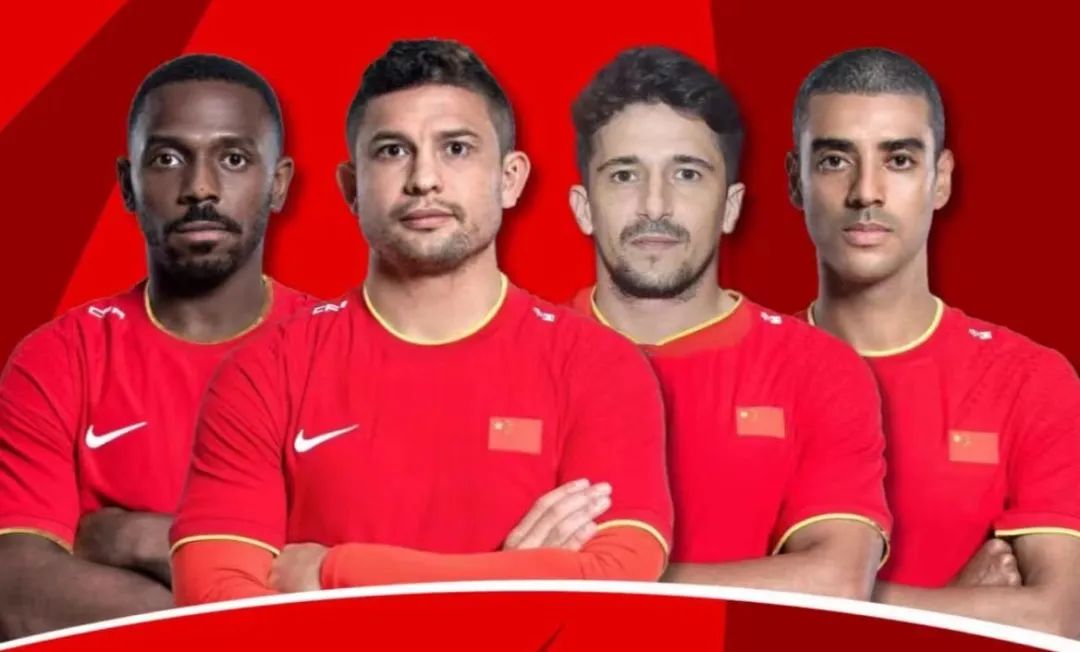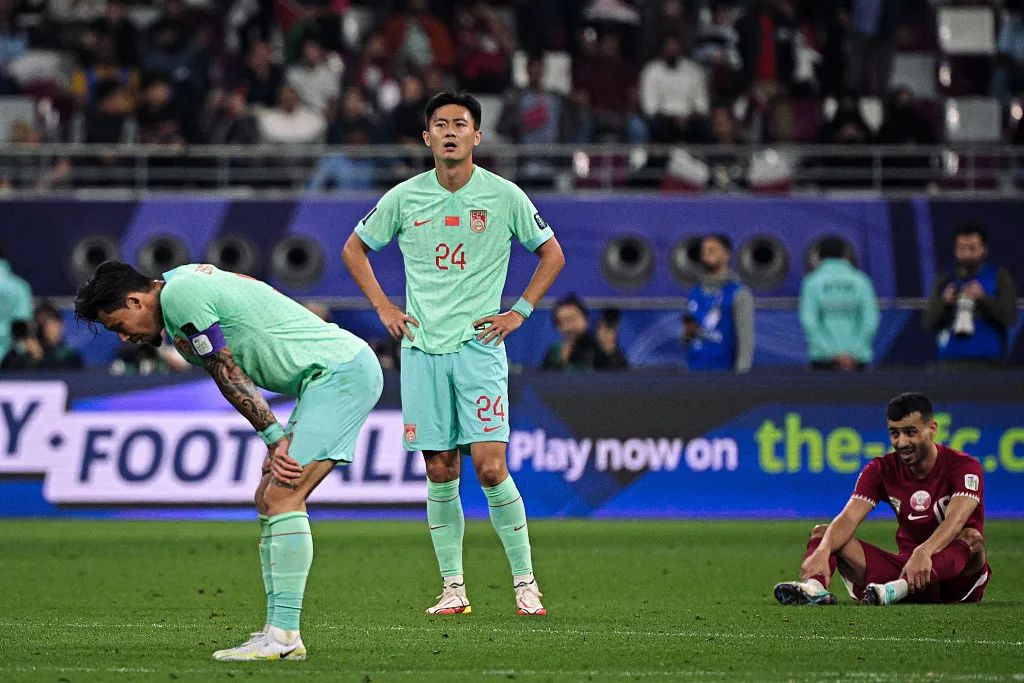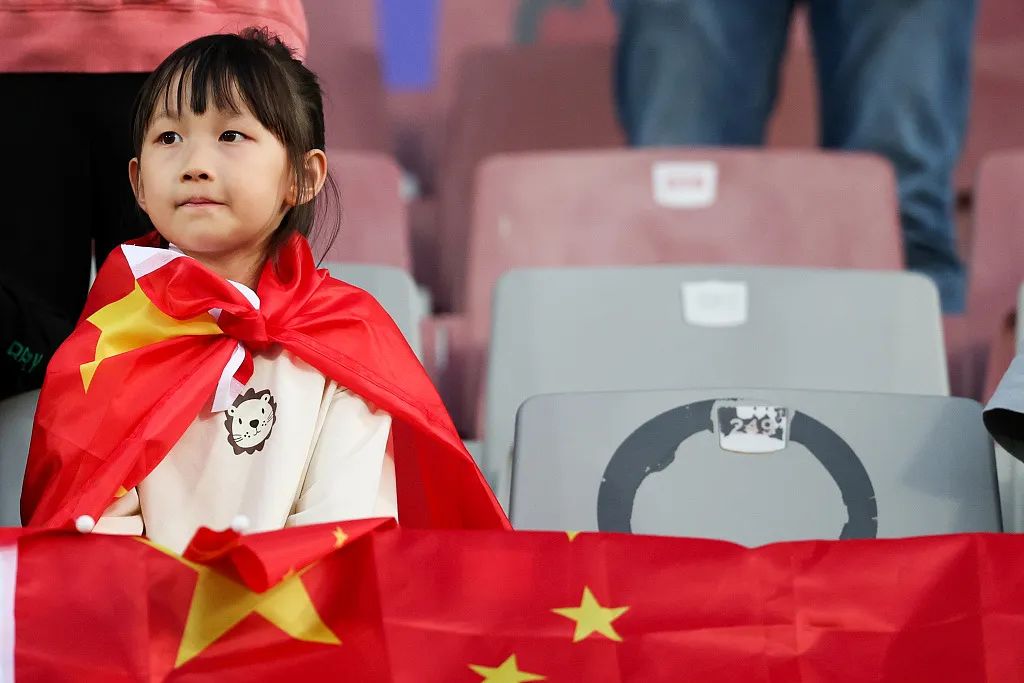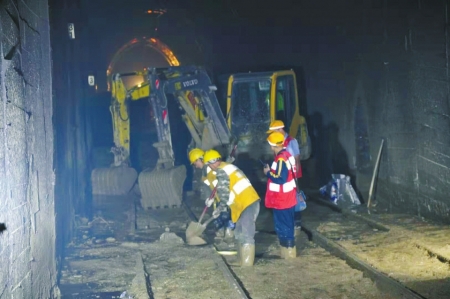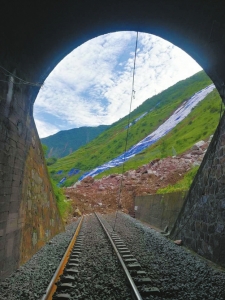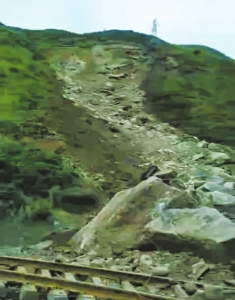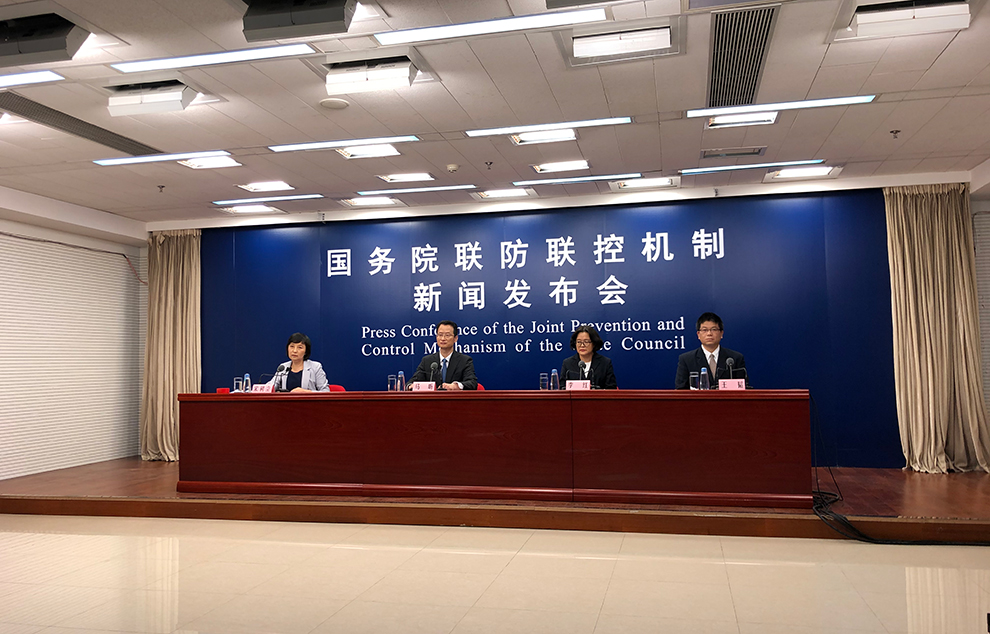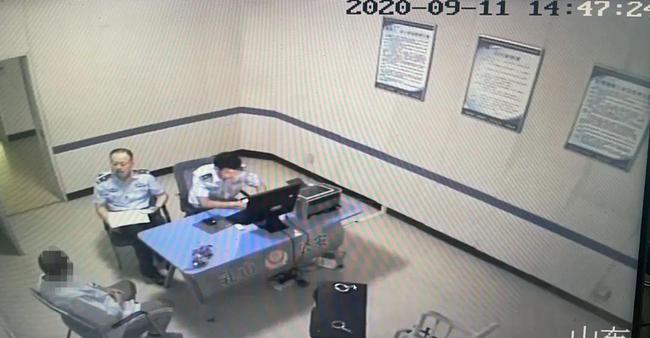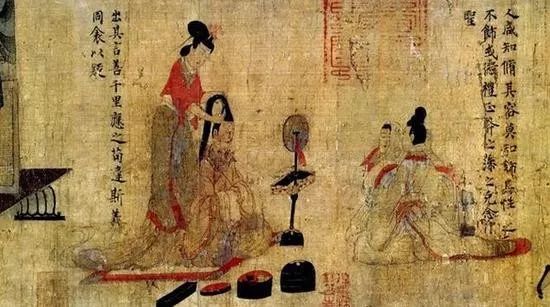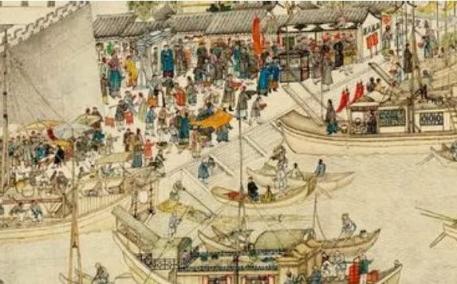Rusic culture is vertical and horizontal
[Introduction] For a long time, "the North Center Theory" or "the Central Plains Center Theory" has been the mainstream of China’s traditional historical narrative. However, the author believes that there has always been a "southern clue" in the history of China, which is obscure and invisible because of the deliberate neglect of orthodox historical view and the guiding interpretation of political discourse. As a part of diversified history, "Southern Clue" is a key to understand China civilization, interpret China road and judge China fortune. Without this key, our understanding of China, a very large-scale civilized country, will become one-sided and distorted. The author points out that it is necessary to sublate the southern narrative based on the "north-centered theory" or "central plains-centered theory" in the past, and it is particularly important to return the "southern clue" of China history to its original appearance from the standpoint of southern subjectivity. The article originally contained the book "People, Settlements and Regions: A Preliminary Study of the History and Geography of the Middle Ages South" written by Professor Rusic, and was transferred from "Reading with Writing", which only represents the author’s point of view, and is hereby compiled for your consideration.
The southern context of China’s history
▍ Query on the narrative of China’s ancient history with the history of the northern Central Plains as the main clue.
Generally speaking, the traditional exposition of China’s ancient history is mainly based on the historical development of the northern Central Plains, and can even be expressed as a "north-centered theory" or "Central Plains-centered theory". In the interpretation system of China’s ancient history with "dynasty change" as the main narrative clue, the historical development of the southern region is mainly described as the expansion and conquest of the Central Plains by force, and the economic development of the southern region is brought about by the migration of the northern population to the south; Then, the implementation of China-Korea system in the southern region: establishing a powerful bureaucratic system (and various institutional settings attached to the bureaucratic system, such as the system of selecting officials and the legal system, etc.), implementing effective administrative control over the southern region, and bringing the people in these areas into the household registration and taxation system of the dynasty countries; Further, the so-called "enlightenment" was carried out. The dynasty countries promoted the so-called "kingization" through various means or channels, such as the education system, the election system, and the means of reward, recognition and punishment, that is, instilling orthodox ideology into the southern region, "turning barbarians into Chinese" or "turning barbarians into summer", and finally completing the "cultural transformation" of the southern region, that is, the so-called "standardization" of China culture or
For more than half a century, China historians have criticized this historical narrative and interpretation centered on the history of the Central Plains from two aspects: one is the polycentric or pluralistic theory of the origin of China civilization. After years of exploration and efforts by several generations of archaeological and ancient history researchers such as Su Bingqi, Zhang Guangzhi and Shi Xingbang, the monocentric theory that the middle and lower reaches of the Yellow River (Central Plains) are the origin of Chinese civilization has been abandoned, and the polycentric theory or pluralism of the origin of China civilization has been widely recognized. Archaeologists and ancient historians have generally agreed that there are at least a few clues about the early civilization of China between 6000 and 4500 years ago:
(1) Yangshao culture-Longshan culture in the Central Plains, with the so-called "Huaxia Group" as the main body (early and middle period); (2) The Dawenkou culture-Shandong Longshan culture with the so-called "Dongyi Group" as the main body from the south of Shandong Peninsula to the Jianghuai area; (3) Majiabang culture-Songze culture-Liangzhu culture with Dongyi Group as the main body in the area around Taihu Lake in the south of the Yangtze River; (4) Daxi culture-Qujialing culture-Shijiahe culture with the so-called "Miao Man Group" as the main body in the middle reaches of the Yangtze River; (5) The northern part of Yanbei and the western part of Liaoning are likely to be Hongshan Culture-post-Hongshan Culture (Xiaoheyan culture) or Xiajiadian culture with the "Huangdi Group" as the main body; (6) South-central Inner Mongolia may also belong to the so-called "Huangdi Group" as the main body of the pre-Yangshao-marine culture-Longshan culture; (7) Xianrendong-Zhucheng-Wucheng culture and Xiqiao Mountain (Linglongyan) culture-Shixia culture in the southern region with Poyang Lake and Pearl River Delta as the main axis; (8) Sanxingdui culture in Bashu area-Twelve Bridges culture.
Although archaeologists and ancient history researchers have many different understandings of the division of these cultural flora and their interrelationships, internal divisions and types, in general, they think that the early civilization in China is composed of different origins, with multiple centers and diverse characteristics, which are mutually integrated, and gradually form a "core" from "diversity".
This kind of reasoning has fundamentally changed the interpretation mode of "dissemination and diffusion" in the study of the history of the origin of civilization, thus bringing a fundamental impact or negation to the so-called "Central Plains culture going south" (and spreading around) ancient history interpretation system.
The second aspect of the overall criticism of the historical narrative and interpretation centered on the history of the Central Plains comes from the research methods and approaches of the South China School on the construction of local society or historical anthropology centered on the southeast coastal areas (focusing on the research of the Pearl River Delta and Xijiang River Basin, Fujian Putian Plain, western Fujian Mountain and Taiwan Province area).
One of the starting points of the study of South China is to try to get rid of the interpretation mode that the dynasty expanded from the central plains to the surrounding areas (including the southern regions) through military expansion, political control and enlightenment, and finally established a unified Chinese empire, but to regard the Chinese empire as a cultural concept. The infiltration of the metaphor of imperial authority into the southern frontier society was not implemented by issuing decrees from top to bottom, but by the local people upgrading their own motivation from bottom to top. They adopted propositions from the political center in a certain historical period, and in the process of building local society, they used these propositions as the language of national order.
In other words, the history of immigration, education, development and cultural communication is not only the history of civilization expansion, but also the expression language of establishing national order based on the power of local society. In this way, in the process of entering the political, economic, social and cultural system of the Chinese Empire, different places have actually gone through different paths and have different connotations. In the words of Mr. David and Mr. Liu Zhiwei, it is: "Under the concept of great unity, there can be great differences in implementing the same system in different time and space. The reason is simple: Ming and Qing empires all have huge regions and populations, and the geographical environment and customs of the eastern, southern, western and northern parts are very different; Different regions also play different roles in the empire; More importantly, even if different regions have experienced a common dynasty history, they have their own local historical processes with very different contents. " Obviously, the charm of South China studies is to show the diversity of historical development and local social construction in the late Chinese Empire.
Comparatively speaking, the study of China’s medieval history is mainly about the history of the Han, Wei, Jin, Southern and Northern Dynasties, Sui, Tang, Song and Yuan Dynasties. Although it also shows some diversified tendencies, generally speaking, it is still based on the historical development of the Central Plains, especially the history of the rise and fall of dynasties. Although great progress has been made in the study of the history of the southern region in the Six Dynasties, the Nine Kingdoms in the Middle and Late Tang Dynasty and the Southern Song Dynasty, we have carefully considered the overall orientation of historical narrative and interpretation in the above three periods, and we can find that:
The relevant research is still mainly focused on its significance to the development of the southern region, emphasizing that the economy and society of the southern region have made great progress during this period, so it can be expressed as "the history of the southern region under the history of the dynasty"; Not on its significance to the historical development of China, but on its significance in the history of China, so it is not "the history of China in the southern region". More importantly, the interpretation and research on the history of the Han Dynasty, the Sui and Tang Dynasties and even the Northern Song Dynasty are basically based on the history of the Central Plains dynasty, and the history of the southern region is basically regarded as a subsidiary position. In fact, we don’t know much about the history of the southern region in this long period, and the proportion in the existing historical narrative and interpretation system of China is also quite light.
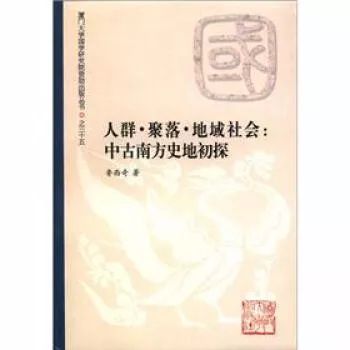
There are two important joints:
First, the unified Sui and Tang Dynasties inherited the southern region and the northern Central Plains region, which are actually two historical traditions: the former is the southern tradition since the Six Dynasties, while the latter is the northern tradition mainly formed in the Northern Wei Dynasty, the Eastern and Western Wei Dynasties, the Northern Zhou Dynasty and the Northern Qi Dynasty. As far as the land system, village system and corvee system are concerned, the existing research has fully revealed that the Wei, Jin and Northern Dynasties are a system of the same strain, and its evolution clues are clear. The Six Dynasties, especially the Eastern Jin and Southern Dynasties, is another system, which was different from the Central Plains in the Han Dynasty. During the evolution of the Six Dynasties, the gap with the Central Plains in the north became larger and larger. Then, after the reunification of Sui and Tang Dynasties, how did these two historical traditions gradually merge?
There is a debate about whether there is a so-called "southern dynasty". However, the focus of this debate is on the institutional origin of the unified dynasty in Sui and Tang dynasties, and it has not touched on the issue of how to implement and implement the unified dynasty system in various places. Specifically, the process of the unification of Sui and Tang Dynasties was actually manifested in the conquest of the southern regime by the northern Central Plains Dynasty. Therefore, in terms of system implementation, it was mainly manifested in the establishment of various systems based on the northern Central Plains, such as the Lifang system with closed space as the main feature, the land equalization system with limited land as the core, the household registration system which was far stricter than that of the Eastern Jin Dynasty and the Southern Dynasties, and the mature government and soldiers system during the Western Wei Dynasty and so on. How were they promoted and implemented in the southern region?
In other words, after the unification of Sui and Tang Dynasties, how did these systems, which were mainly formed and evolved step by step in the history of the Northern Dynasties, absorb and how many "southern traditions" since the Six Dynasties? Are the various systems formed after the integration of the northern and southern traditions (mainly the northern tradition) widely implemented in the southern region? If the answer is yes, how are they implemented? For example, in the hilly and mountainous areas scattered in the south, how does the village system with household registration control as the core operate? In the upper and middle reaches of the Yangtze River and the Fujian area in Lingnan, where there are a lot of wasteland, how is the land equalization system aimed at limiting land implemented? How did most of the southern cities, which inherited the city walls and forms since the Six Dynasties, establish the regular Li Fang like Chang ‘an, Luoyang, Pingcheng and Taiyuan? And if our answer is no, then what is the situation? How did the dynasty countries realize their rule in the southern region (of course not the whole southern region)?
The second joint is the southern region inherited after the unification of the Northern Song Dynasty, and actually there are two historical traditions with the northern region as its foundation: Zhao and Song Dynasties were born out of Hebei, Hedong Fanzhen and the Five Dynasties regime in the late Tang Dynasty, and made no difference to each other (Mr. Mao Hanguang had a detailed discussion). What it directly continued was the northern tradition with Hebei and Hedong Fanzhen as its core, which Mr. Chen Yinke called "Hu"
After the Middle Tang Dynasty, the southern region actually embarked on a different or very different road from the northern region: to a great extent, the former and later Shu, Yangwu-Nantang, Qian wuyue and even Machu, Nanhan and Jingnan all continued to move forward on the basis of Li Tang, and inherited the Tang system. Of course, there were many complicated and diverse changes, but its foundation was the Tang system, so there should be no doubt. Then, after the reunification of the Northern Song Dynasty, whether and how did this southern tradition integrate into the unified system of the Northern Song Dynasty? Scholars who study the history of the Song Dynasty used to call it "the system of the Song Dynasty along the Tang Dynasty". So, where did the Song Dynasty inherit the system of the Tang Dynasty? What Tang systems were inherited and developed? To what extent does the reformed system evolved from the Tang system reflect the specific needs of the southern region? How is it implemented everywhere?
The same problem actually existed in the Yuan Dynasty. As we know, the southern region inherited by the Yuan Dynasty is the tradition of the Southern Song Dynasty, which is quite different from the northern tradition that evolved around Yanjing since the Liao and Jin Dynasties. The tradition of the Southern Song Dynasty, at least, was passed down to the Ming Dynasty, which became an important resource for the Hongwu Dynasty to construct a unified system. On this issue, according to Mr. Li Zhian and Mr. Zheng Zhenman in recent years, they all have some in-depth and interesting thoughts from different angles, which are worthy of attention. Therefore, the southern history of Ming and Qing dynasties should be in line with the tradition since the Southern Song Dynasty.
If we carry out in-depth thinking and research on the above issues, we may be able to trace the "southern context in China history" (not the development clue of southern history); Perhaps, sorting out the "southern context" will help us to understand the historical development of China. This is one of the starting points of my thinking about the ancient history of China in recent years.
▍ A preliminary analysis of the records of medieval historical documents in southern China.
In order to reconstruct the narrative and interpretation system of southern history and comprehensively think about the southern context of China’s historical development, the first step should be to comprehensively sort out and analyze the historical documents, archaeological materials and oral materials obtained from field investigation, so as to clarify their values and limitations.
Before 2003, like most researchers, I believed in the social, economic, cultural and even environmental records of the South in traditional literature, so as to study problems. For example, the descriptions of "the land of Chu and Yue" in Biography of Historical Records and Geography of Han Dynasty were used as the basic materials to understand the situation in the South during the Han Dynasty. Later, it was slowly discovered that there was something wrong here: these documents were basically written by northern scholars, with a strong Chinese color or the concept of central plains, and their descriptions of southern people, economy, society and culture could only reflect their understanding, rather than the objective actual situation. The initial suspicion came from the different descriptions of Jinghu Road (Jingxi Road and Jinghu Road) in Song and Yuan Dynasties: in the Southern Song Dynasty, such as Lu You, Wang Shipeng and Lu Jiuyuan, Jingxi Road and Jinghu Road were desolate and very backward; After forty years of war in Song and Meng Dynasties, under the pen of northern scholars in Mongolia and Yuan Dynasties, the Jinghu area turned out to be very rich. This sharp contrast made me start to think about who left these records: of course, the scholars of the Southern Song Dynasty, mainly from the East-West and Zhejiang roads in the south of the Yangtze River, despised Jinghu Road, while some authors from the north and even the Western Regions and Mongolia obviously lamented the richness of these areas.
Starting from this, I began to systematically ponder the sources, types and values of historical documents recorded in the southern region of the Middle Ages. After several years of exploration, I now preliminarily divide these documents (materials) into the following categories in terms of their sources:
The first is the narration and writing of Chinese scholars (Central Plains scholars).
It is believed that at least before the Northern Song Dynasty (including the Northern Song Dynasty), most of the main written materials about the historical records of the South belonged to this part. Its core part is the southern historical materials found in official history books and chronological history books, which is the basic basis traditionally used to construct the clues of southern historical development. Now, we know that this part of the material mainly reflects the Chinese scholars’ understanding of the social, economic and cultural conditions in the south of their time, and it is the narrative and interpretation of the history of the south by the "other" (external observers).
We need to carefully analyze the records and interpretations of these documents to see which of them may reflect some realities of southern history, or adopt the interpretation of the southern society itself, and which parts are just the subjective imagination or understanding of the "other" ("external" observers) and their times. We should start with the southern images in Chunqiu Zuozhuan and Guoyu, and then investigate the "historical sources" of southern historical records in official history such as Shiji and Hanshu-what are their sources. The History of the Three Kingdoms and the Four History of the Southern Dynasties include many southern factors, but the credibility still comes from the hands of scholars who have or hold the view of Huaxia. The Book of Jin, Sui Shu, History of the South and History of the North, which were compiled in the early Tang Dynasty, are typical examples of reinterpreting the history of the South under the unified situation. The old and new Tang Shu and the History of the Five Dynasties compiled in the Five Dynasties and the Northern Song Dynasty are similar to this. Not to mention the history of Song, Yuan and Ming. These official histories have constructed the basic framework for the narrative and interpretation of southern history by traditional historiography. We should "deconstruct" this narrative tradition from here now, and point out that all this is just the understanding and narration of the southern history under the orthodoxy of the dynasty and the central view of the Central Plains, and it is not the "own" history of the south, so it cannot better explain the significance of the historical development of the southern region in the historical development of China.
Second, the narrative and writing of southern scholars based on the "South".
I’m not sure how to define "Southern Scholars" and how to base on "South". I only have a vague idea. Of course, birth and growth environment are the first consideration, but the key lies in whether its narrative and interpretation hold a position of "sympathy" with the southern society (in the same situation) Scholars in the south are based on the narration and writing in the south, and this tradition can at least be traced back to Qu Yuan and Chu Ci. I thought that the narration in the south had a considerable influence in the early Han Dynasty (before Emperor Wu), and the emphasis on Zhang Chu in The Moon Table at the Time of Qin Chu in Historical Records may be due to this, while Sima Qian’s narration about Wu, Chu and Yue may also be mainly derived from the narrative tradition of the south, which was tailored. Huayang Guozhi, Yuejueshu, and the geography and landscape travel notes of the Six Dynasties all deserve careful analysis. These works of the Six Dynasties show the efforts of southern scholars to make their own narrative and interpretation of their own local history. Unfortunately, this kind of effort was neither persistent nor short-lived, and was soon overwhelmed.
Most southern scholars in the late Tang and Five Dynasties yearned for the Central Plains and the Tang Dynasty (or pretended to be the real Tang Dynasty), so there were few writings based on the south. However, wuyue of Qian’s family and Shu of Meng’s family (even Fujian of Wang’s family) are all interested in their own "cultural construction", so they also left some records based on the south, which need to be analyzed. The narrative and writing tradition of southern scholars in the Northern Song Dynasty is basically based on the Central Plains or China. During the Southern Song Dynasty, even in the Yuan Dynasty, the focus of scholar-officials shifted to "local" (Han Mingshi revealed the situation of this shift in the Southern Song Dynasty, and I thought this shift was basically completed in the Yuan Dynasty), which prompted them to base themselves more on the South and describe and write the history of the South.
During the Ming and Qing Dynasties, the narration and writing of southern scholars presented a complex and diverse situation: on the one hand, a considerable number of narration and writing traditions, which may occupy the mainstream position, were still based on the position of the Central Plains or China, and through these narratives and explanations, the history and culture of the South were successfully incorporated into the historical and cultural system of China or China centered on the Central Plains; On the other hand, the narrative and writing mainly based on the south, especially the specific local society, has gradually formed into a new tradition. Although this tradition is often covered under the topic of "the position and role of a certain place and its society in the history of China", it is actually based on the local area, aiming at emphasizing the characteristics and importance of the local area, and thus gradually building a historical view and historical knowledge system based on the local society.
Genealogy (although genealogy has always been defined as folk literature, in fact, it is still the scholars and their concepts that play a major role in the process of genealogy revision, so genealogy still belongs to the narrative tradition of scholars or literati) embodies these two seemingly contradictory narrative and interpretation directions: on the one hand, it should be upward, emphasizing its long history, so as to connect with "Central Plains", "Huaxia" and its culture; On the other hand, it should be downward, highlighting the dominant position and important influence of this race in local society. The research on genealogy has fully revealed this point.
The third is the narration and interpretation of the "people" in the south.
Here, it mainly refers to the literature materials other than the narration and writing of scholars, mainly including religious documents such as contracts (positive contracts and hidden contracts), scientific instruments, religious materials such as statues and monuments, folk historical legends and stories, some materials in genealogy, and non-written materials such as statues and pictures.
I think these are the real "folk documents". They are documents that people need and use. Such as contracts, most of them are not written by scholar-officials (even if they are written by scholar-officials, they are not written as "scholar-officials"), and the bookkeepers (calligraphers and signers) are not scholar-officials, but the people understand the meaning and significance of these contracts (the process of "selling wine" and reading aloud in the process of book signing enable both parties and related parties to understand their meaning) and widely adopt this form. These words or images reflect people’s narratives and ideas about their own history. For example, the stipulation of "never forgive" in the contract of Tang and Song Dynasties, and the existence and expression of a large number of white deeds in the contract of Ming and Qing Dynasties all imply the people’s indifference to the power of the dynasty or the state to varying degrees, indicating that there has always been some kind of system outside the power of the dynasty. I believe that by combing these words and images, we can get a glimpse of some realities of people’s lives in southern China and build a historical understanding based on the people (or the people).
Sorting out and discriminating the above-mentioned records, reflecting the clues of the historical development of the South and the literature materials at several levels, and analyzing: (1) Who wrote it and how did he know it? That is, the analysis of historiography; (2) Why did he write like this? Instead of writing it like that? How did he integrate those divergent data, and what considerations were there between the choices? The main method is to analyze the differences between different records and the reasons for this difference. I call this "analysis of history writing"; (3) What did he write these for? That is, why did he write these? That is, the analysis of writing purpose and intention. Only by understanding these problems can we use these materials freely and then discuss the historical development of the southern region. At the same time, through these works, we can also establish a characteristic "historical philology".
▍ The starting point of research and the development of research work (ideas and ideas)
On the basis of the above preliminary thoughts (in fact, these thoughts were gradually formed in the following research process), I began to try to carry out some special research work. Because my work foundation and data accumulation are mainly in the middle reaches of the Yangtze River, especially in the Hanshui River Basin, the relevant special research naturally begins in the middle reaches of the Yangtze River. In the past five years of thinking and research, some ideas have gradually formed, most of which have not yet been implemented, just some ideas and research ideas.
(1) the origin, ethnic division and essence of the residents (or population) in the south
One of the core clues about the historical development of the southern region in the traditional China historical interpretation system is that the northern population moved southward and the resulting changes in the composition and distribution of the southern population, while the economic development, social development and even the establishment of political control order in the southern region were all realized with the northern population moving southward. Therefore, if we want to rebuild the cognitive and explanatory system of southern history, we must re-understand this system.
After several years of thinking and preliminary discussion, I think that the above-mentioned argument system is at least incomplete, or there is deviation in the direction, and I have initially formed some rough views: the main part of the resident population in the southern region (generally speaking) is gradually developed from the indigenous population in the southern region; Northern immigrants and their descendants, although the proportion in southern regions is not the same, generally speaking, do not account for the majority of the total population (in all periods); In the traditional interpretation system, it is probably wrong to say that most of the population in the south can be traced back to the Central Plains in the north.
Therefore, the first step we need to do is to distinguish the historical truth and "cultural creation" of "the population of the south comes from the north". Therefore, it is necessary to re-examine the influence of several large-scale migration movements of northern population to the south in the history of China on the population composition and distribution in the south, and make an overall assessment. In particular, the three migration movements (after Yongjia Rebellion, Anshi Rebellion and Jingkang Rebellion) that have long been regarded as changing the population composition in the south and triggering the so-called wave of development in the south and their influences are the key to the problem. It can be believed that these three migration movements have increased the population in the southern region, but compared with the indigenous hukou in the southern region, the northern immigrants and their descendants may not have absolute advantages (this requires careful literature research and data analysis). The basic composition of household registration in the southern region is still the indigenous people in the south.
Scholars in South China’s research on the clans in Guangdong and Fujian, especially the interpretation of genealogy by Mr. Liu Zhiwei and Mr. Zheng Zhenman, have quite fully proved that most of the legends or records about their ancestors from the Central Plains in Guangdong and Fujian are just a kind of "cultural construction", and this "historical memory" is just a means to transform themselves into members with "legal" status in the imperial order. Therefore, the path of using genealogical data to study immigration history has to be reconsidered.
The second step is to further identify: (1) who are these indigenous people in the south-what are their characteristics; (2) How are they defined, and how do they define themselves? (3) How are these southern aborigines gradually considered (as they themselves think) to be "from the Central Plains", that is, how is the "Southern residents originated from the Central Plains" established, and what is the essence of this statement. Of course, these problems need to be investigated in different periods. It involves some important issues in the history of "ethnic groups" in the south, such as the origin and evolution of Yue, Man, Ba, Liao and Yi, and the nature of ethnic groups. Our general tendency is to think that these ethnic groups or ethnic groups in the south in history can basically be regarded as "ethnic names" added by Chinese scholars from the outside on the indigenous people in the south, rather than their own definitions. Therefore, it is not their own definition. With a considerable part of them, they were gradually incorporated into the edition system of the dynasty countries, accepted the words and culture representing "Chinese civilization", and gradually moved from "externalization" to "internalization", and then divorced from their indigenous background and rewritten as "Chinese immigrants from the Central Plains" (they themselves, especially their elites and literati, played a vital role in this rewriting process).
By understanding the above two points, we can reinterpret the population development, distribution and ethnic nature in southern China. The standpoint of discussing this issue should be anthropological, not ethnological. Only by putting our discussion on the background of the composition of the population (immigrants and aborigines) can we avoid many controversial issues such as the so-called national definition and division, and focus on: Who is the main body of the historical development of the South? Northern immigrants suppress southern natives?
(B) the southern types of ancient institutions and the southern road of institutional evolution.
Another core clue of the traditional China historical interpretation system about the historical development of the southern region is that the dynasty countries gradually established the political, economic and cultural systems of the dynasty in the southern region through various means and channels, and through these systems and their operation, the southern regions were steadily and firmly brought into the control system of the dynasty countries. "Institution" has always been the core of the study of China’s ancient history, and it is also regarded as the most important way for the dynasty countries to control the southern region (and other regions).
There are two prerequisites for this explanation: (1) the centralization of absolutism is powerful and has enough power to implement its system in various regions; (2) Because of the first point, the implementation and operation of the "system" in various places are at least relatively uniform or consistent. However, the existing research has questioned these two premises. Therefore, we are thinking: is it possible to form a "southern type" (or more local types) according to local conditions in the process of implementing various institutional designs of dynasty countries in the southern region? And does the evolution of this system show some kind of "southern road"? On this issue, my current thinking focuses on the following four aspects:
(1) My thinking starts from the village system.
We know that the village system, which gradually sprouted in the Spring and Autumn Period and the Warring States Period, and was established in the Qin and Han Dynasties, especially in the Han Dynasty, was actually based on the villages in the northern region. Unearthed documents such as Juyan Han Bamboo Slips revealed that all the residents lived in a "village" surrounded by earth walls or fences, thus forming a relatively uniform living style and village system. The bamboo slips of Han and Three Kingdoms published in Jiangling, Changsha, Jiangdu and other places in the south show that there are no such concentrated settlements in the south, but scattered in small-scale scattered villages, and even many natural villages have only two or three households or even one household, and there is no evidence that there will be soil walls around such natural villages!
Obviously, in the scattered state, the implementation of the village system of "100 households as the interior" can only adopt flexible methods: giving priority to the region, dividing the land as the interior, and integrating the interior into the township, that is, the village system is manifested as "regional organization", and its foundation is the region, not the village. This is the variation between the village system in the south and the village system in the north (the standard system determined by the dynasty countries) in the implementation process, and this variation has a great influence on the later evolution because it happened at the source.
(2) The second starting point of my thinking is the cities in the south and the systems inside and outside the cities.
As we know, the city is a symbol of the power of the dynasty, so it requires the shape and structure of the city (the city under its jurisdiction, the same below) to follow the requirements of the so-called "ritual system" as much as possible. Many experts who study the architectural history of China emphasize the observance of Kao Gong Ji in the construction of ancient cities. In the north, we have also seen a large number of square ancient city walls that meet the requirements of the system. During the Ming and Qing Dynasties, the municipalities in the southern region also tried to abide by these regulations, but they did not do well enough, and they still showed some tendency of being impolite. Most importantly, they seemed to be more inclined to abide by the requirements of topography, actual needs and "Feng Shui". Topography, actual needs and the southern city shape under the principle of Feng Shui, and the northern city under the principle of etiquette show two directions of ancient city shape-of course, what we see now is more likely the result of the joint action of these two directions. In the same way, I tried to see how the Lifang system in the Sui and Tang Dynasties was implemented in the cities in the southern region.
In the article "Lifang System and Its Form in Local Cities in Tang Dynasty", I argued that in the early and middle period of Tang Dynasty, except for a few cities under the jurisdiction of prefectures and counties with newly built or completely rebuilt battlements, most local cities did not have closed Lifang surrounded by square walls or fences; In the city of Luocheng, the state capital that continues to use the old city wall, and in the city where the city wall has not been established, there are also Li and Fang belonging to the urban and rural grass-roots administrative organization system. After the "An Shi Rebellion", the Lifang system was widely implemented as most cities and some county towns were generally built or expanded. These Li Fang are mainly grass-roots administrative units organized for the purpose of household registration control, tax collection and public security, and their form is a block centered on streets and lanes and spread to both sides. At the same time, there are markets in the suburbs of many cities, which further shows that even in the early and middle Tang Dynasty, urban commercial activities were not completely confined to the closed "market square".
In other words, when the Lifang system was established in the Sui Dynasty and the early Tang Dynasty, most cities in the southern region followed the pattern since the Six Dynasties, and there was no Lifang system at all. However, after the mid-Tang Dynasty, the southern government officials generally carried out the Tang system including the Lifang system in the southern region, especially in the cities where Jiezhen was stationed. This explanation is quite different from the explanation of Lifang system (or Fangshi system) since Kato Fanfan, which further affects how we understand the direction of urban development in Song Dynasty.
(3) The third aspect I think about is the establishment and division of administrative regions in southern China.
It is generally believed that administrative division is a regional and hierarchical administrative system under the unified centralized state, and it is the division and stratification of the areas ruled by the centralized central government from top to bottom, that is, the so-called "national economy". In fact, the formation and division of administrative districts is a more complicated process, which is often not due to the system design of the central government, but the result of a series of political, economic, military and even personnel factors. Local political changes, regional political patterns, local political forces, economic ups and downs, military actions, strategies and other factors will have a great impact on the formation and changes of local administrative districts.
For example, the establishment of Xunyang County in the first year of Yongxing in the Western Jin Dynasty (304) was one of the measures taken to further strengthen the control of the middle reaches of the Yangtze River after the Zhangchang Uprising was settled; In the first year of Yongjia (307), the expansion of Xunyang County’s territory and the increase of counties were probably related to Huayi’s efforts to win over local forces in Xunyang. During Yongjia’s two to five years, Xunyang County moved to the south, which was probably due to Huayi’s conservative Jiangzhou and shrinking the defense line. By the end of the Eastern Jin Dynasty, the merger of Xunyang and Shangjia provinces and the reduction of Songzi and Hongnong counties to Xunyang counties were part of the rectification measures of Liu Yujing and Jiang, mainly to weaken the strength of Jing and Jiang counties. The "Shannan Road" in the early Tang Dynasty was not defined by the courtiers according to the map and the "shape of mountains and rivers" at that time, but the inheritance and development of the ever-changing geographical concept and political geographical pattern since the Western Wei and Northern Zhou Dynasties and even the Jin and Northern Wei Dynasties, which actually had its specific political, military and even economic and cultural basis. In other words, the division of the ten roads in Zhenguan and the determination of their geographical scope can be explained not only by the word "mountains and rivers form convenience", but also by its profound historical, political and geographical background. Such as Henan and Hebei roads, are obviously closely related to the political and geographical pattern and its changes since the Northern Wei, Eastern Wei and Northern Qi Dynasties. Therefore, if we want to explore the origin of the "Ten Ways of Zhenguan" in the early Tang Dynasty and the principle of its division, we must combine the changes in geographical concepts and political geographical patterns since the Jin and Wei Dynasties to understand it.
(4) The fourth aspect I think about is the implementation of the service law.
Shuowen says, "We should serve and defend the border. Ancient prose works from people. " "Fu, convergence also," "rent, land tax also". It is the king’s law to make up families and people to pay for service. In the study of the history of China’s tax service system, Fu has been paid more attention to, and its evolution is also roughly clear; However, the research on service is relatively weak, and many joints are not quite understood. At first, I paid attention to the difference of the service law between the north and the south. I read the section of "Food and Water Conservancy" in Song Dynasty, and noticed that the service of river engineering in the northern part of the Northern Song Dynasty was very heavy, while it was basically absent in the south (south of Huaihe River). Later, I systematically read the research of Mr. Zhang Zexian, Mr. Zheng Xuemeng and Mr. Wang Yuquan, that is, I was quite concerned about the differences in the implementation of the service law in different times. However, this field is very difficult, and I haven’t been able to enter it yet. I just have some immature ideas, which may be the most laborious part in the future research.
Military service and compulsory service are the core parts of the corvee system in the Middle Ages, and they are also the most burdensome services for compiling families and people. I tried to discuss the similarities and differences between military service in the northern and southern dynasties from the perspective of military service, but I haven’t figured it out yet.
Generally speaking, the Northern Dynasties gradually developed from the tribal military system to the government military system, and the army and the people were basically separated. Therefore, although the Han people were frequently recruited as soldiers, for example, when Emperor Xiaowen of the Northern Wei Dynasty went south, the people of the prefectures and counties were sent, and "one out of every ten people was charged", but before the reform of the government military system by Emperor Wu of Zhou, the military service burden of Han farmers was generally not very heavy. However, the Southern Dynasties were quite different. Since Sun Wu, people were frequently recruited as soldiers. By the Eastern Jin Dynasty and the Southern Dynasties, the so-called "three-to-five selection system" was formed. For example, in the 27th year of Yuan Jia in Liu Song Dynasty (450), he "sent three or five people to Yanzhou in the south"; "In the fifth year of Daming (461), three or five ding were issued". The so-called three-five-ding system means that five ding takes three. The military service of the Han people was more important than that of the Northern Dynasties. And the service period is very long. Bao Zhao’s poem says: "Young people leave home, but poor people are still getting started"; "I went to my hometown for 30 years, and I got back to my old hill." This is the north and south systems of military service. The Northern Zhou Dynasty and Sui Dynasty unified the south and gradually extended the government military system to the south. However, there were few government houses in the south, and most of them were beyond the Yangtze River, so the burden of military service in the south was greatly reduced. Therefore, after the reunification of the Sui and Tang Dynasties, the law of military service in the north was promoted to the south.
In the article "Fang Yu Haozu in Shannan in the Western Wei and Northern Zhou Dynasties", I tried to explain how the government soldier system was promoted to Shannan with the conquest of the Western Wei and Northern Zhou Dynasties on the basis of Mao Hanguang’s research.
If the military service in the southern region in the Middle Ages was relatively light, the transportation service was relatively heavy. During the Sui and Tang Dynasties, a large amount of grain was transported northward every year to the south of Jianghuai, resulting in "the left side of the river was trapped and lost", and "the water was dragged by the land, and the spring was endless, and people were forced to seize agriculture. What do you expect when you die? Kanto resented." After the Anshi Rebellion, the Tang Dynasty paid tribute to the southeast wealth, saying, "Recruit teachers from all directions, turn to pay thousands of miles, pay for cars and horses, and send them far and near, and all the people will work hard [hard] (stop)." Or face each other repeatedly in one day, or don’t understand the armor for years, and the sacrifice is lacking, and the family is in vain. Life and death are displaced, and grievances are condensed. The labor is endless, and the land is barren. Life is harsh and demanding, and fatigue is empty. Turn to the ravine, leave the township, and the hills in the city are cut off. " This is the situation of Dezong dynasty in Shannan, Huainan and Jiangnan. This shows the importance of the transportation service in the south.
In a word, the important system designs in ancient China, such as the village system, the city lane system, and the tax service system, were mainly based on the northern region, and were generally adapted to the geography, economic production mode and social conditions in the northern region. Therefore, when these systems were implemented in the southern region, they must be modified, so the "southern type of system" was produced; Because at the beginning of implementation, it was not consistent with the system design and regulations, and in the later evolution process, more and more southern characteristics were formed, thus developing the "southern road of institutional evolution." The southern types of these systems and their evolution of the southern road, in turn, affected the system design itself, which became more and more important later, making the ancient system gradually "southward."
(3) Folk beliefs and rituals in southern China
Since 2003, I have devoted a large part of my time and energy to the study of land purchase vouchers. I have studied these land purchase vouchers for three reasons:
First, it is a real folk document, which is written by people who are not very literate or completely illiterate. Most of the writers are geographers, Mr. Yin and Yang, monks and Taoist priests, not scholars.
Second, people in this world, whether rich or poor, will die. Therefore, how to treat and deal with death is a major event in life. By buying land coupons, we can get a glimpse of how ancient people viewed and how to deal with the problem of death.
Third, the source of land purchase vouchers is the land-telling policy made by Chu in the late Warring States and the Western Han Dynasty. Therefore, I tend to regard it as the early tradition of dealing with death in some parts of the south (the middle and lower reaches of the Yangtze River or the whole Yangtze River basin). According to the materials of the Han, Wei and Six Dynasties, Wu Yijun and Andu Wang may be the earlier ghost kings in the south, which may be another source of origin, different from Taishan Shenjun in the north. In other words, before Buddhism was introduced and became a popular belief, the idea of the underworld in the south was quite different from that in the north. From the Chu Dynasty to the Han Dynasty, it was a death treatment system that originated from the south, especially from Chu. Of course, in the Tang and Song Dynasties, this tradition affected all parts of the country, even the northwest (Dunhuang and Turpan materials), and this can be regarded as the expansion of southern folk beliefs, or the process in which northern beliefs were influenced by southern beliefs.
The second aspect is about the folk funeral ceremony. This problem is actually an extension of the previous one, because the study of land purchase vouchers only deals with written materials and is not a living history. Then, how to see through its ancient ritual tradition in contemporary anthropological observation? A few friends, mainly Professor Liu Yonghua, and I have been exploring this problem constantly. Yonghua’s interpretation of the text of the scientific instrument book has helped me a lot. However, the writing tradition can reach many people, no matter how big its application scope is; In a ceremony, participants are limited, but the degree of participation of participants is far more than reading or listening to the expression of words.
Therefore, the ceremony and its process can best show the locality. Since Wu Yashi, many scholars who have studied folk belief rituals have focused on observing the refraction or deposition of the state power system from the ceremony, which is of course an important aspect, but I think that many rituals are mainly made for local society and local people, so they need to be understood and recognized by the people, so it is "local". The locality of the ceremony may be one of the focuses of my anthropological view of ancient history. But I don’t know exactly how to do it.
(D) the diversity of people’s livelihood and the diversification of economic forms in the southern region.
In the traditional historical interpretation system of China, the general narrative mode of economic development is: population increase (labor force increase) → land increase (field increase) → productivity increase (mainly manifested in the promotion of iron farm tools and Niu Geng, the development of irrigation and water conservancy, and the latter is mainly manifested in the development of agricultural economy (the increase of total agricultural products) → the development of commodity exchange and commodity crop cultivation → the development of handicraft economy. This narrative and interpretation of the history of economic development is mainly in terms of simple farming areas, and it is not suitable for the northern region, especially the areas where farming and animal husbandry run concurrently.
As far as the southern region is concerned, people’s livelihood depends on two important aspects: mountain forest (mainly gathering, fruit tree planting and logging) and rivers, lakes and oceans (fishing and breeding), in addition to farming with rice as the core. Therefore, the "agricultural resources" in the southern region are different from those in the northern Central Plains, which rely on "land" relatively simply, so the structure of its agricultural economy is different from that in the northern region. In this way, it is the first step to study the structure of agricultural economy in southern China from the perspective of resources. The ownership of mountain forest and water surface may be an important starting point for studying this issue.
Because the agricultural economy does not simply rely on "fields" and the sources of livelihood are diversified, the exchange between different types of products is likely to become inevitable. I guess the frequency of exchange and trade in the southern region is higher than that in the northern region, and the degree of development of commodity economy may be higher than that in the northern region, especially later. In other words, the commercial tradition in the southern region is relatively developed than that in the northern region. In this way, the diversified economic forms in the southern region are formed: (1) farming economy dominated by rice farming, (2) forest economy dominated by fruit tree cultivation and forest logging, (3) fishery economy dominated by fishing and breeding, and (4) primitive commodity economy mainly characterized by product exchange. The diversity of land resources and their utilization forms is the basis of the diversity of economic forms. Diversified economic forms, or diversified ways of livelihood, make the life of southern residents relatively less scarce, so the economic development in the southern region is relatively stable, unlike the ups and downs in the northern region. This is an important reason why the social and economic development in the southern region is relatively stable and there is no major fracture.
Diversified economic forms, mainly rice farming and supplemented by fishing and hunting economy, have greatly influenced the social and economic life in southern China.
Biography of Historical Records of Huo Zhi says: "The land of Chu and Yue is vast and crowded, with rice and fish in soup, or ploughed with fire and water, and clams are harvested, not waiting for Jia." If the land is spared food, there will be no hunger, so it will drag out an ignoble existence, and there will be more poverty without accumulation. It is the south of the old river and Huaihe River. There are no people who are frozen and hungry, and there is no family of thousands of dollars. "
The records of southern counties in Hanshu Geography also confirmed Sima Qian’s description. For example, Ba, Shu and Guanghan, "the southern part of the country is yi, and the Qin Dynasty thought it was a county. The land is fertile, and there are rivers and rivers, and the bamboo trees in the mountains are spared from eating fruits." South Jia Dian, Bo Tong, west near Qiong, Yong Ma Luo Niu. People eat rice and fish, and they are worried about their deaths. They are not worried about vulgarity, but they are easy to be slutty and weak. " From the south to the two counties of Bo ‘er and Zhuya on Hainan Island, it is also known as "men’s farming, planting rice and hemp, and women’s silkworm weaving."
It describes a decentralized, self-sufficient and autonomous society in relatively equal, which is in sharp contrast with centralization and autocracy in the middle and lower reaches of the Yellow River. As far as the basic mode of production is concerned, rice farming needs clear fields and ridges, as well as irrigation and drainage facilities; Compared with dryland agriculture, rice farming needs higher technology and more careful management. Therefore, people engaged in rice farming tend to be more stable than farmers who grow dry land, and are easy to develop fine and skillful qualities, which is conducive to the development of some handicrafts with higher skills. Abundant aquatic products and mountain forest resources provide stable and reliable supplementary food. All these have promoted the formation of self-sufficient life style under rice farming.
At the same time, the early rice farming in the southern region was mainly carried out in the valley and the edge of the plain, so small-scale cooperation could be carried out, and the requirement for large-scale cooperation was not very strong, which made small-scale family production possible.
On the other hand, the dense river network in the plain lake area or the rugged roads in mountainous areas all urge farmers to live as close as possible to the cultivated land, and diaspora has become the dominant rural settlement form in the southern region. In a word, the economic pattern of rice-based agriculture largely determines the tendency of decentralization, self-sufficiency and even autonomy in the southern region.
The last aspect of this thinking should be "the southern origin of the development of traditional China thought", including (1) the "southernization" of Confucianism, (2) Buddhism and Buddhism in the southern region, and (3) the southern origin and evolution of Taoism, a local religion in China. These problems haven’t been considered yet, but in 2010, I wrote an article "Textual Research on the Inscriptions of Thousand Buddhas and Stone Pagodas in Wenzhou Longwan Guoan Temple in Song Dynasty", which is considered as the beginning of research in this field, and I can’t say what I have learned.
Most of the ideas mentioned here have not been put into practice, and they should be adjusted or even greatly changed in the future research. But in the next ten years, I will probably continue to explore along the direction and logic mentioned in this article, hoping to gradually form some mature and meaningful understandings.
This article was originally published by Professor Rusic, People, Settlements and Regions: A Preliminary Study on the History and Geography of Middle Ages South (Xiamen University Press, 2012), and was transferred from "Reading with Writing" with the original title of "The Southern Context of China History". Limited by space, the content is slightly revised. The picture comes from the internet. If there is any infringement, please contact to delete it. Personal sharing is welcome, please contact the copyright party for media reprinting.
Original title: "Rediscovering the South: Another Road Behind China’s Historical Doubt | Cultural Horizon"
Read the original text


